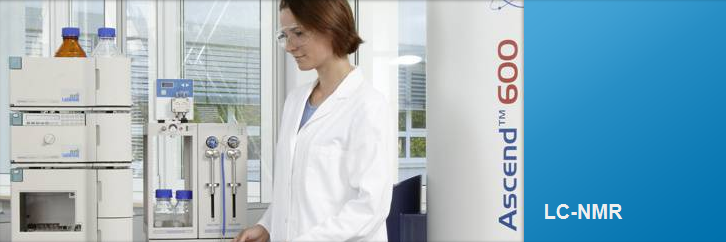
Interfacing Chromatography to NMRHyphenated analytical techniques combining mass spectrometry and chromatography are well established laboratory tools. The combination of chromatography and NMR has also made its way into the analytical laboratory. Further developments even combine all three techniques into an LC-NMR/NMR-MS system and the introduction of solid phase extraction as efficient interface between chromatography and NMR. Two different main workflows are possible. The chromatography system can be coupled more or less directly to the NMR spectrometer. The sample is transferred into the NMR “as is”, that is, it arrives with the concentration and the solvent as supplied by the chromatography system. The sample can be transferred during the chromatographic separation and the NMR spectra are then acquired either in on-flow mode (continuously, while the chromatography is running) or in stop-flow mode (while a selected peak is parked in the NMR probe and the chromatography is paused). In a more sophisticated procedure the selected samples are intermediately parked in sample loops and transferred to the NMR after the end of the chromatographic separation. In this procedure the sample handling is minimized. This means after the injection of the mixture, the separated compounds are transferred into the NMR without access of air or light and without any manual handling of the sample. In addition the delay between separation and the start of the NMR measurement can be reduced down to 10 seconds. | The Bruker LC-NMR systems are ideal for sensitive and instable compounds, fully automated analysis, or simply to provide a very convenient and quick path from LC separation to NMR results. In the latest development in LC-NMR, solid phase extraction cartridges are used to immobilize selected peaks after the chromatographic separation. The chromatography solvents are removed and the samples are eluted with fully deuterated solvents from the cartridges into either an NMR flow probe or into standard NMR sample tubes. | For the NMR measurements of a directly coupled LC-(SPE)-NMR/MS systems a flow probe is required. Bruker has developed a variety of high-resolution NMR flow probes with unique sensitivity and NMR configurations like normal 5mm NMR probes (.i.e. inverse and TXI geometry Z Gradients, ATMA, etc.). They have a build in flow cell, that is available in different sizes. |


